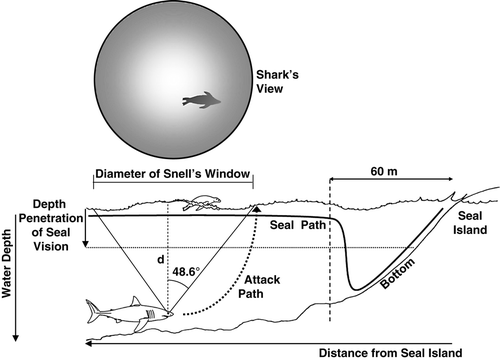Figures & data
Figure 1. Summary of optical and topographic parameters in predator–prey contests between white sharks and Cape fur seals. Down-welling light is dimmed and scattered, rendering the shark's dark gray dorsal surface camouflaged against the dark reef substrate. In contrast, sharks stalking seals from below have a visual advantage over seals, as the latter is backlit and silhouetted against the surface in Snell's window, which restricts the horizontal range of vision (r) to the shark's swimming depth (D); whereby, r = D tan48.5° (~1.13D). Most shark attacks on seals occur where bottom depths average 26–30 m such that the shark's horizontal range of surface vision is ~150–170 m.

Figure 2. If a seal is not killed or disabled in the initial strike by an attacking shark, the seal has tactical advantages in terms of reduced turning radius. In both (A) and (B), a highly manoeuvrable seal evades an attacking shark during its secondary pursuit. Image Courtesy C. Fallows/www.apexpredators.com
